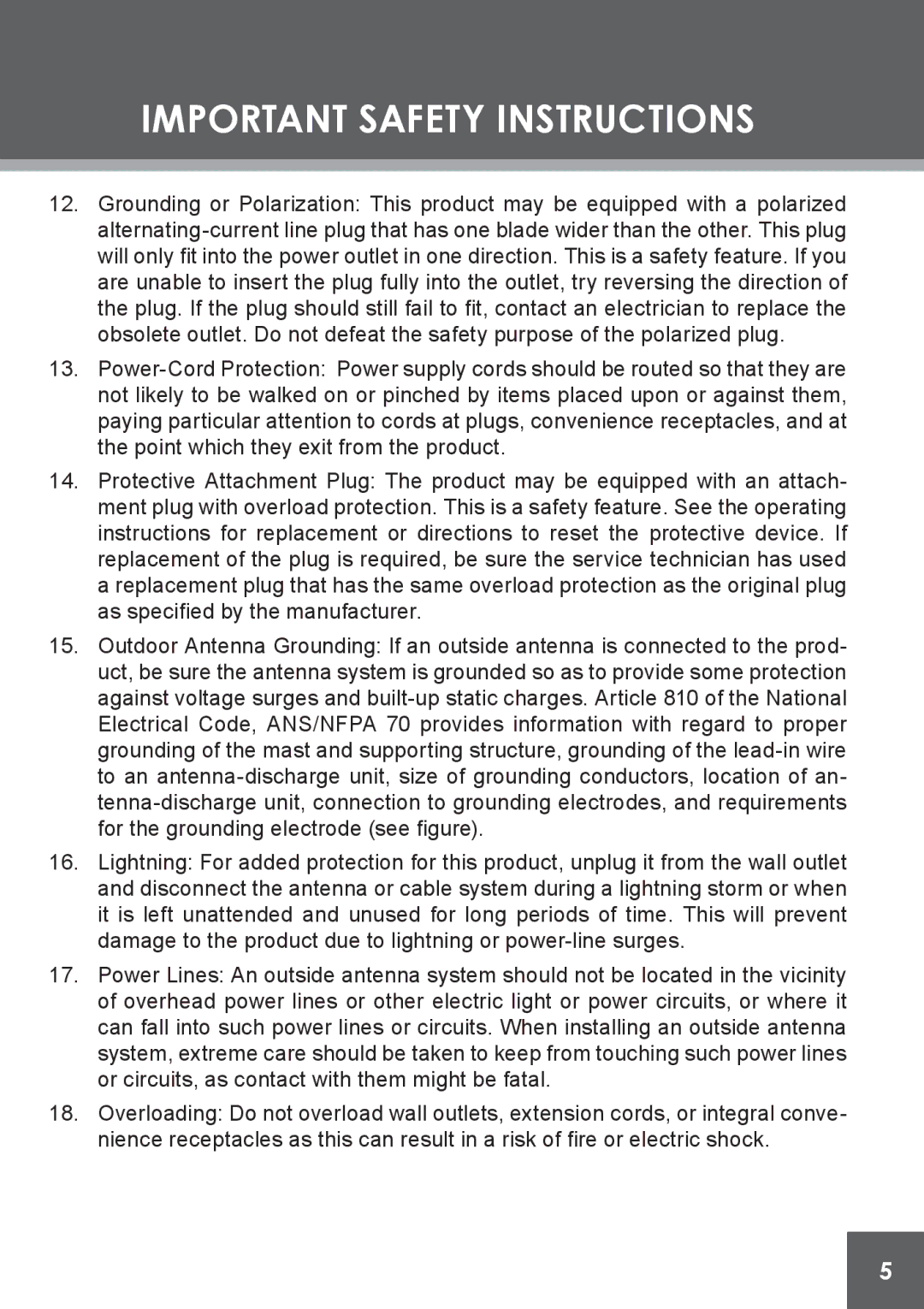
IMPORTANT SAFETY INSTRUCTIONS
12.Grounding or Polarization: This product may be equipped with a polarized
13.
14.Protective Attachment Plug: The product may be equipped with an attach- ment plug with overload protection. This is a safety feature. See the operating instructions for replacement or directions to reset the protective device. If replacement of the plug is required, be sure the service technician has used a replacement plug that has the same overload protection as the original plug as specified by the manufacturer.
15.Outdoor Antenna Grounding: If an outside antenna is connected to the prod- uct, be sure the antenna system is grounded so as to provide some protection against voltage surges and
16.Lightning: For added protection for this product, unplug it from the wall outlet and disconnect the antenna or cable system during a lightning storm or when it is left unattended and unused for long periods of time. This will prevent damage to the product due to lightning or
17.Power Lines: An outside antenna system should not be located in the vicinity of overhead power lines or other electric light or power circuits, or where it can fall into such power lines or circuits. When installing an outside antenna system, extreme care should be taken to keep from touching such power lines or circuits, as contact with them might be fatal.
18.Overloading: Do not overload wall outlets, extension cords, or integral conve- nience receptacles as this can result in a risk of fire or electric shock.
